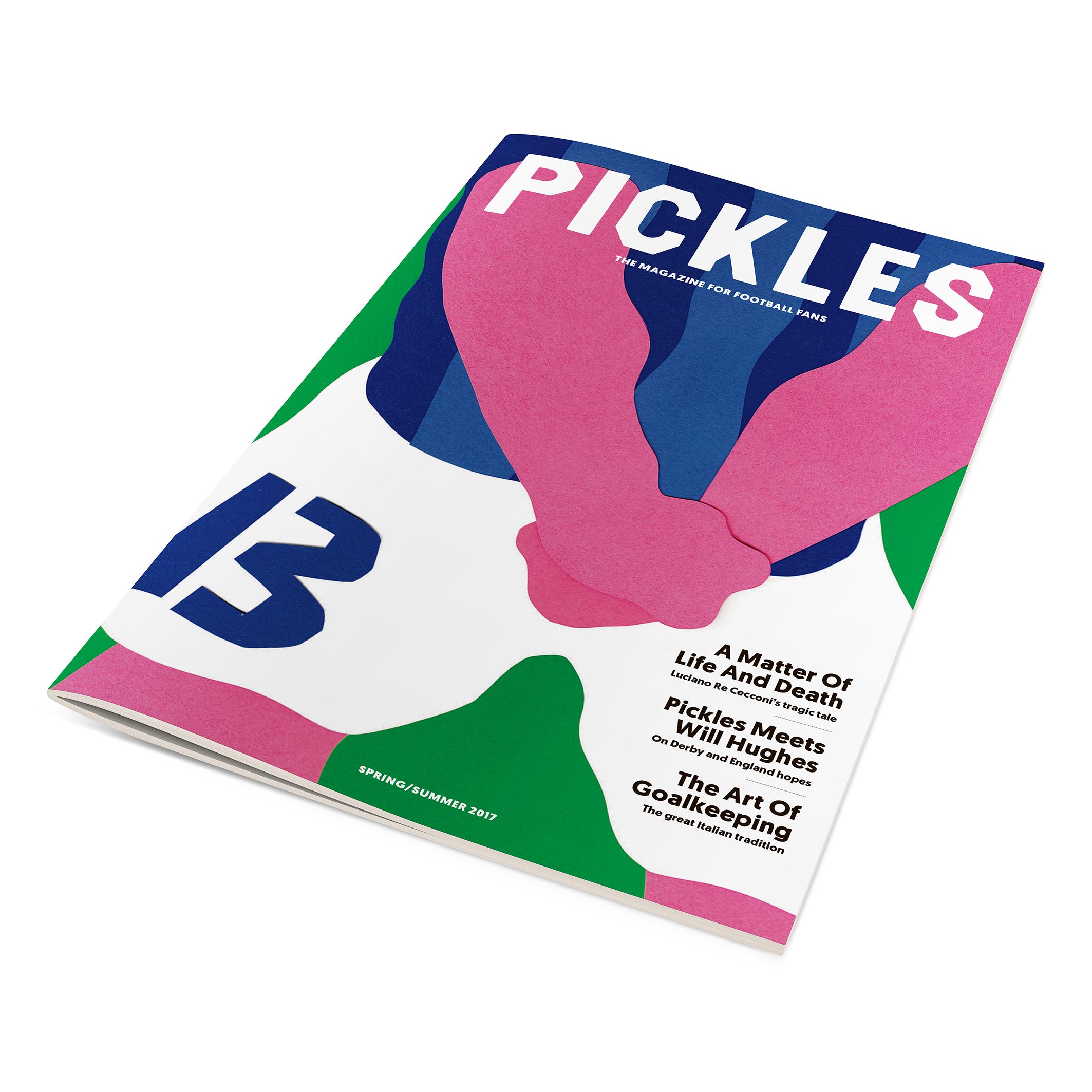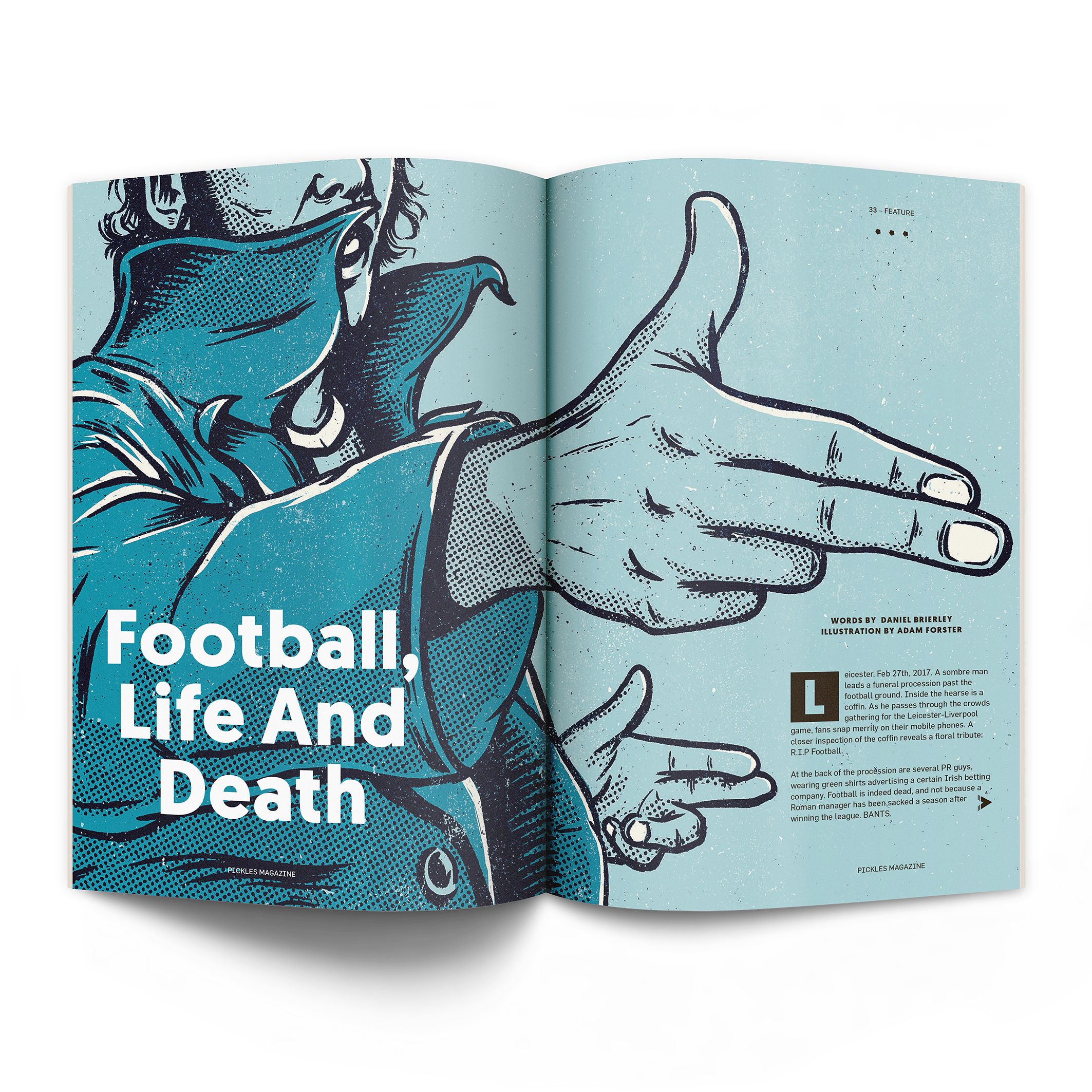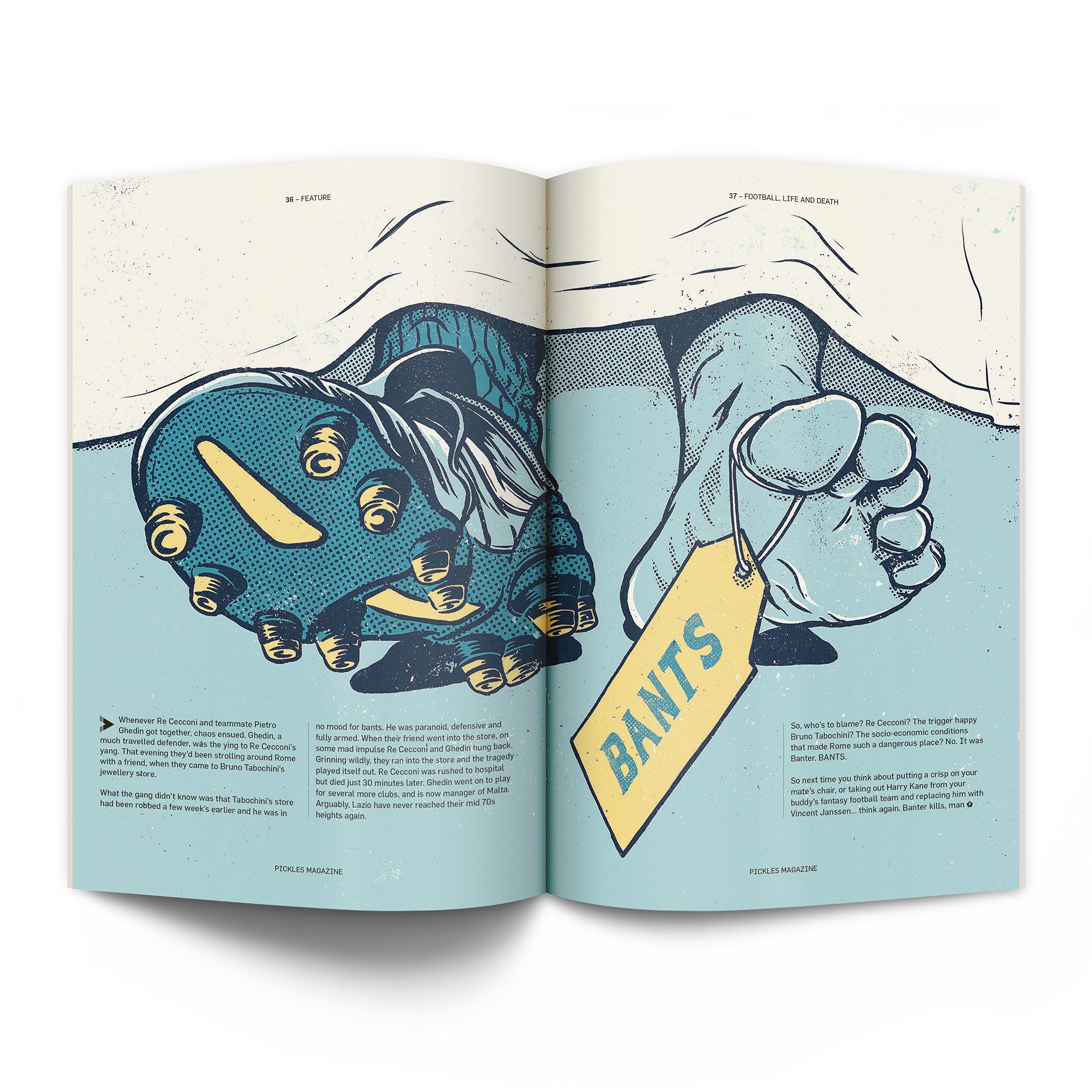FOOTBALL, LIFE AND DEATH

Leicester, Feb 27th, 2017. A sombre man leads a funeral procession past the football ground. Inside the hearse is a coffin. As he passes through the crowds gathering for the Leicester-Liverpool game, fans snap merrily on their mobile phones. A closer inspection of the coffin reveals a floral tribute: R.I.P Football.
At the back of the procession are several PR guys, wearing green shirts advertising a certain Irish betting company. Football is indeed dead, and not because a Roman manager has been sacked a season after winning the league. BANTS.
We are used to banter in football now. It permeates our culture like some vapid tapeworm. From Sun Bet pimping out a fat reserve keeper to eat pies on live TV, to wacky mascots leaping on celebrating goalscorers, we exist on a banter-rich diet: safe, sanitized and seriously unfunny.
Soccer AM in the 90s was the nadir, with Tim Lovejoy as the evil incarnate, the poet laureate of Mad Bants, a Loaded magazine pullout become sentient. Banter is King. Long live the King, says Ray Winstone’s floaty head as you sob into your pint of overpriced lager.
It reduces everything we do to the level of a village hall pantomime; it belittles us, wrapping a condescending arm around us and telling us nothing matters, we’re just playing out a game - bet on this, buy this, spend this, consume consume consume then share all on social media. You’re not a person - you’re a fourth quadrant staple on some marketing manager’s spreadsheet. It reduces our national game to an ad break with occasional outbreaks of sport.
BANTS. Possibly the most terrifying expression to hear, a knuckle-clenching stomach turning explosion of socially-driven hilarity that signifies something truly shit has taken place.
“Come off it mate” I hear you say, scoffing a pie in super slo-mo HD, winking and gurning for the camera, “It’s BANTS… a larf…it’s not like anyone died!!”
Rome. January 18th, 1977. Two large men burst into a jewellery store, faces partially covered up with their jackets - “Fermi Tutti, questa è una rapina!!” Hands up, this is a robbery!
From behind the counter, the owner ducks and twists, pulling out a shotgun. He points it at the men. A beat. One of the men spots this, turns around and legs it out of the shop, the door slamming behind him.
The other man, tall, strikingly blond, shakes his head. His blue eyes sparkle with mischief. He actually moves closer to the owner, almost daring him to use the gun, intimidating him with his height and aggression.
When the gun goes off, the pellets slam into the blond man’s chest, knocking him to the ground. The smile wiped from his face, he lies, virtually senseless on the cold tiles, gasping for air.
The owner comes slowly around the counter, hands shaking, still clasping the weapon, as he looks down at the erstwhile robber, a grim flicker of recognition on his face. ‘Ma dai..?’
The blond man lies on the floor, looking up at the owner, blood pouring out of a wound that from close up, is clearly mortal. Through the pain his natural humour shines through: ‘Era uno scherzo, solo uno scherzo’.
‘It was only a joke, only a joke’.
BANTS.
Luciano Re Cecconi was known as L’Angelo Biondo, the Blond Angel, on account of his hair, a rarity in Italy. After winning Serie B with Foggia he moved to Lazio in 1972. To Rome.
For a farm boy, Rome in the 70s was an eye opener. The clothes, the hustle, the bustle, the cars, the bars. A city remade post-Mussolini, struggling to find its place in a nuclear age. Known for his box-to-box style and his energy, Re Cecconi was also known as a joker. A character. N’Golo Kante crossed with Joey Barton’s twitter account. On the pitch the Biancocelesti won the Scudetto in 1973-74, and Re Cecconi was called into the National team, winning two caps. This was the high water mark for Lazio, and for Re Cecconi.
Off the pitch this was a team that really let off steam. Politically they reflected Rome in the 70s, with the rise of the Brigate Rosse on the Left a reaction to the right wing dominance of Italian politics. At times areas of Rome were no-go zones as it took on the appearance of an armed camp. Indeed to this day, Roma and Lazio align along political lines; Roma - Left and Lazio - Right.
These fault lines also ran amongst the Lazio side of Re Cecconi. Such was the schism that the team were forced to have two separate dressing rooms. The fact that certain – unnamed - players loved to carry around guns and let them off at random moments probably didn’t help team morale. Possibly.
Only one player seemed to be able to bridge this gap: L’Angelo Biondo. His good nature and his infectious laugh made him extremely popular. Like a forerunner of Gazza in the 90s, he united the team with his pranks. But this would be his undoing.
Whenever Re Cecconi and teammate Pietro Ghedin got together, chaos ensued. Ghedin, a much travelled defender, was the ying to Re Cecconi’s yang. That evening they’d been strolling around Rome with a friend, when they came to Bruno Tabochini’s jewellery store.
What the gang didn’t know was that Tabochini’s store had been robbed a few week’s earlier and he was in no mood for bants. He was paranoid, defensive and fully armed. When their friend went into the store, on some mad impulse Re Cecconi and Ghedin hung back. Grinning wildly, they ran into the store and the tragedy played itself out. Re Cecconi was rushed to hospital but died just 30 minutes later. Ghedin went on to play for several more clubs, and is now manager of Malta. Arguably, Lazio have never reached their mid 70s heights again.
So, who’s to blame? Re Cecconi? The trigger happy Bruno Tabochini? The socio-economic conditions that made Rome such a dangerous place? No. It was Banter. BANTS.
So next time you think about putting a crisp on your mate’s chair, or taking out Harry Kane from your buddy’s fantasy football team and replacing him with Vincent Janssen... think again. Banter kills, man.
By Daniel Brierley. This article appears in Issue #13 of the fantastic Pickles Magazine, which is available here.
Illustrations by Adam Forster.


